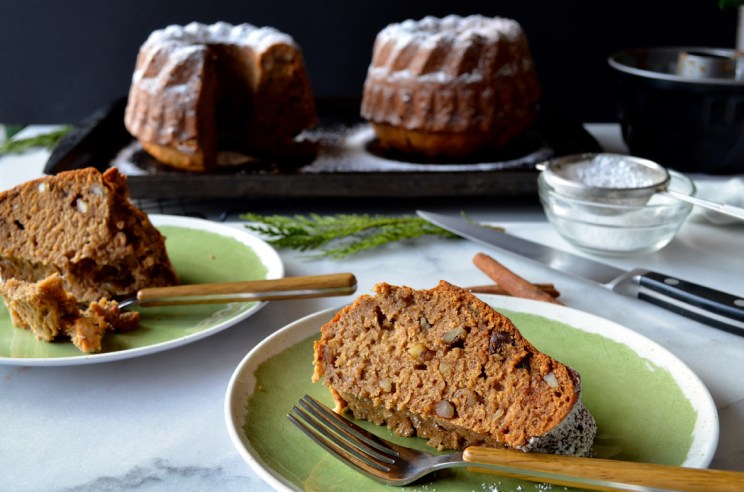Leche Merengada Granita —Granizado de Leche Merengada
 It has been raining for a few days, the temperatures have dropped, and I feel under the weather, so what better time to post a recipe for ice cream than now, ha ha! When I was preparing this recipe for the blog, a few days ago, the temperatures were in the 90’s Fahrenheit, 30’s Celsius. The landscape workers that were trimming our bushes and pulling out all my lavender (sniff) had to leave early because the heat was unbearable. I was happily making my husband’s favorite ice cream, in granita form, leche merengada (loosely translated to whipped cinnamon milk granita), and we still managed to enjoy it during those high temperatures.
It has been raining for a few days, the temperatures have dropped, and I feel under the weather, so what better time to post a recipe for ice cream than now, ha ha! When I was preparing this recipe for the blog, a few days ago, the temperatures were in the 90’s Fahrenheit, 30’s Celsius. The landscape workers that were trimming our bushes and pulling out all my lavender (sniff) had to leave early because the heat was unbearable. I was happily making my husband’s favorite ice cream, in granita form, leche merengada (loosely translated to whipped cinnamon milk granita), and we still managed to enjoy it during those high temperatures.




























 It is true that this blog is dedicated to Spanish cuisine in America; it is also true that some dishes have been made on both sides of the Atlantic, and beyond, for many years. Just like
It is true that this blog is dedicated to Spanish cuisine in America; it is also true that some dishes have been made on both sides of the Atlantic, and beyond, for many years. Just like 


 I made this rhubarb almond cake a while ago, and I was hesitating whether this was the right time to post the recipe, given that rhubarb is not in season, at least where I live. I decided that this was perfect timing: with Thanksgiving next week, pie and cake are words that are dancing in my head, and this rhubarb almond cake is so versatile, you could swap the fruit and obtain the same wonderful result. The traditional ones, pumpkin, apple, and pecan pies, will be on many tables next Thursday, but alongside those, I always like to have something different. My friend Shelby makes coconut cream pie, and I absolutely love it. This rhubarb almond cake could become a pear almond cake, or a plum almond cake, and be a new addition to your Thanksgiving menu. I love it with rhubarb, so if you can find it, by all means, make it! Rhubarb gives the cake a certain tartness that I love, much like I think plums would.
I made this rhubarb almond cake a while ago, and I was hesitating whether this was the right time to post the recipe, given that rhubarb is not in season, at least where I live. I decided that this was perfect timing: with Thanksgiving next week, pie and cake are words that are dancing in my head, and this rhubarb almond cake is so versatile, you could swap the fruit and obtain the same wonderful result. The traditional ones, pumpkin, apple, and pecan pies, will be on many tables next Thursday, but alongside those, I always like to have something different. My friend Shelby makes coconut cream pie, and I absolutely love it. This rhubarb almond cake could become a pear almond cake, or a plum almond cake, and be a new addition to your Thanksgiving menu. I love it with rhubarb, so if you can find it, by all means, make it! Rhubarb gives the cake a certain tartness that I love, much like I think plums would.

 A pear tree grows in the woods next to my house, and I made a pear tart (actually two!) with its fruit. This pear tree is just one of the wonderful discoveries in my garden this summer and fall. Another one, that I’ve mentioned before, was the “resurrection” of the fig tree I planted last year. And it came out in force. It’s now almost taller than me! The weather is still summer-like, we are having a beautiful, beautiful autumn, but I start to worry about how I will protect it for the winter. I think replanting it in a pot and bringing it indoors is out of the question, the tree is too big. What should I do? Do you have any suggestions? If you do, please tell me! I’d love to see the tree alive and well next spring, and I’m afraid much of it will depend on the kind of winter, less or more harsh, that we have. If there’s a special way of wrapping the tree that will protect it better, I’d love to know.
A pear tree grows in the woods next to my house, and I made a pear tart (actually two!) with its fruit. This pear tree is just one of the wonderful discoveries in my garden this summer and fall. Another one, that I’ve mentioned before, was the “resurrection” of the fig tree I planted last year. And it came out in force. It’s now almost taller than me! The weather is still summer-like, we are having a beautiful, beautiful autumn, but I start to worry about how I will protect it for the winter. I think replanting it in a pot and bringing it indoors is out of the question, the tree is too big. What should I do? Do you have any suggestions? If you do, please tell me! I’d love to see the tree alive and well next spring, and I’m afraid much of it will depend on the kind of winter, less or more harsh, that we have. If there’s a special way of wrapping the tree that will protect it better, I’d love to know.
